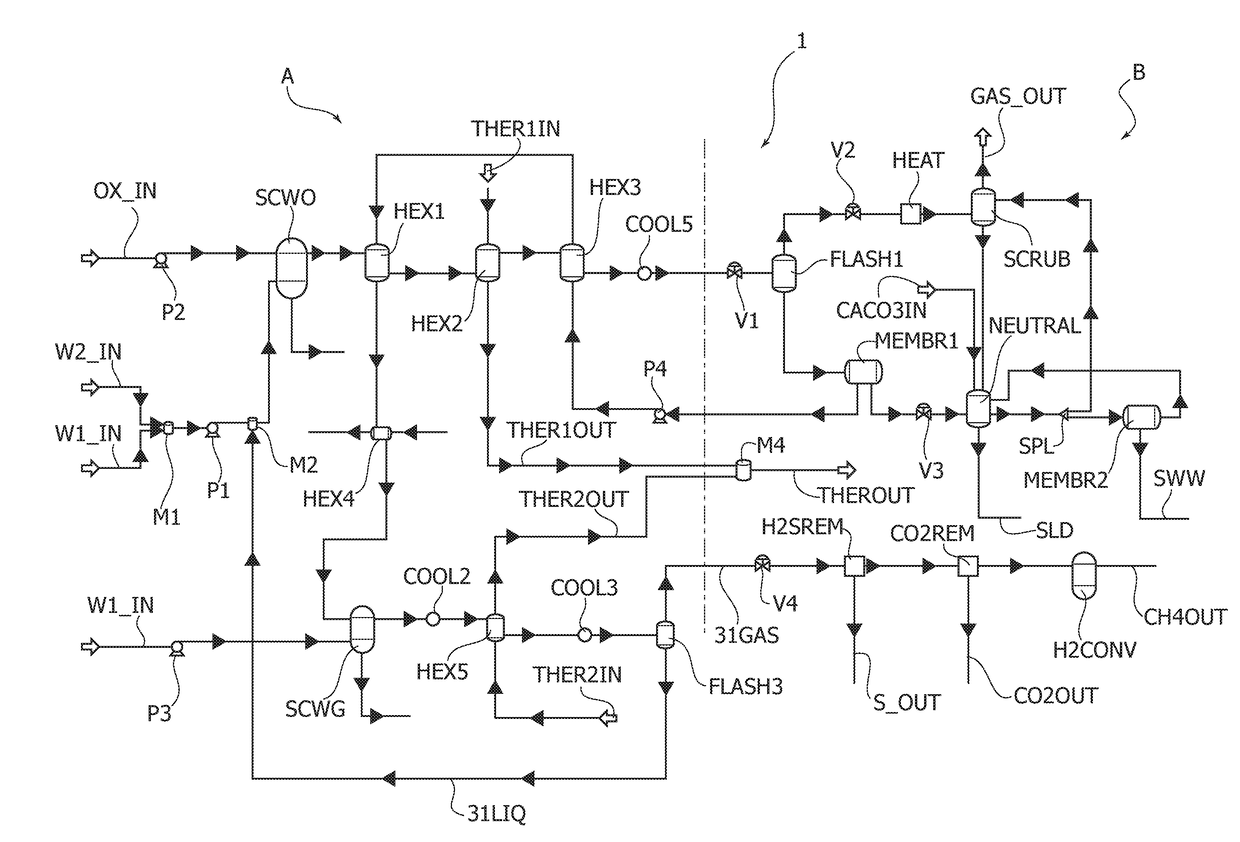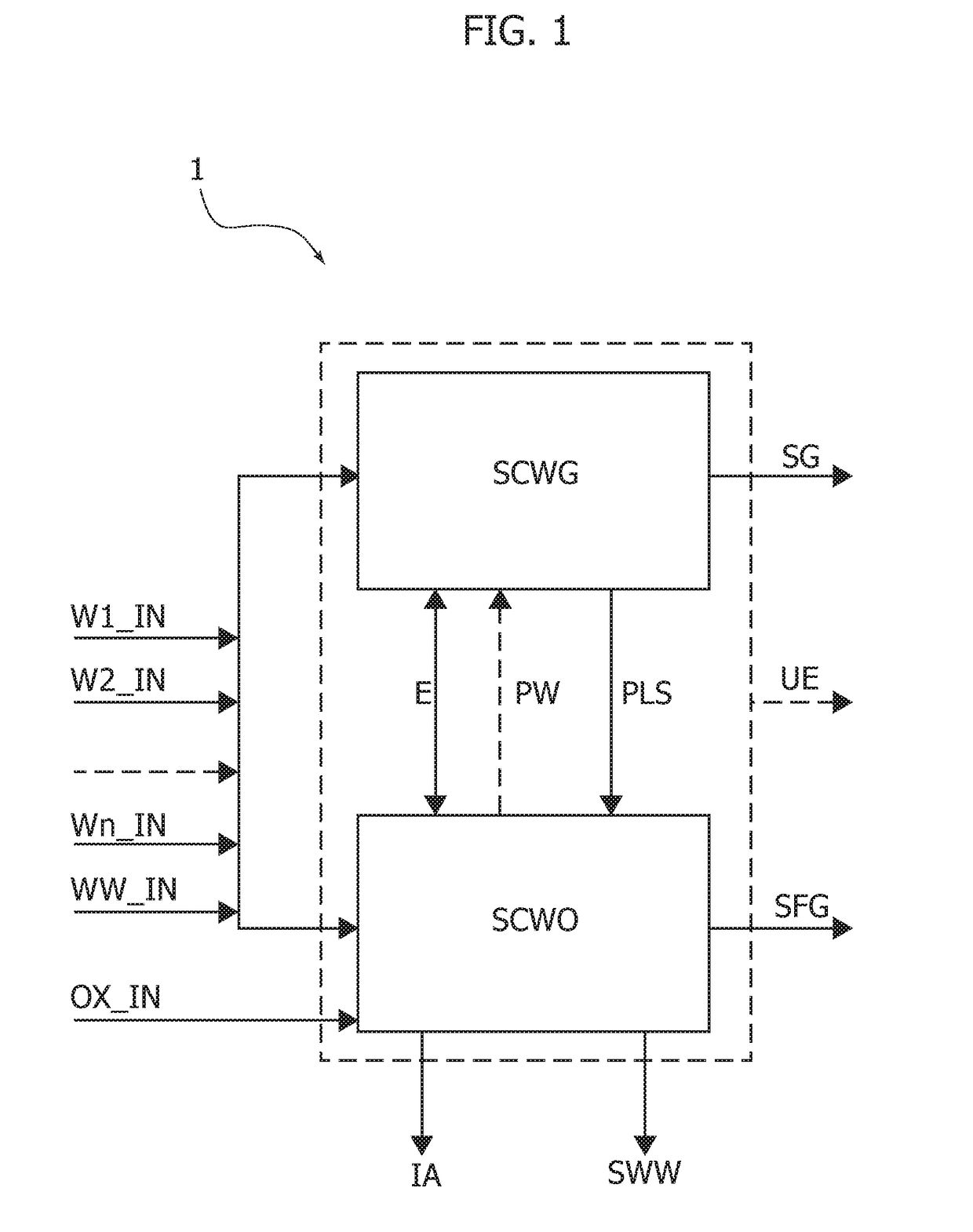Plant for waste disposal and associated method
a technology for waste disposal and waste water, applied in the field of waste water disposal plants, can solve the problems of affecting performance limits, requiring a rather complex after-treatment system, and the possibility of converting energy flows otherwise dispersed by the incinerator into further energy that can be used elsewhere, and achieves the effects of low environmental impact, high energy efficiency, and minimal environmental impa
- Summary
- Abstract
- Description
- Claims
- Application Information
AI Technical Summary
Benefits of technology
Problems solved by technology
Method used
Image
Examples
Embodiment Construction
[0035]With reference to FIG. 1, a waste-disposal plant and a corresponding disposal method according to various embodiments of the invention may represented schematically as illustrated here. In this connection, the reference number 1 designates as a whole the diagram of FIG. 1, which can be deemed equivalent both for the waste-disposal plant and for the waste-disposal method according to the invention.
[0036]In particular, the plant 1 includes a supercritical-water gasification reactor, designated by the reference SCWG, a supercritical-water oxidation reactor, designated by the reference SCWO, and a feeding system, which is able to feed to the plant 1 at least one aqueous current and at least two organic currents of waste. It should be noted that, for the purposes of the present description, by the term “feeding system” is meant a set of devices capable of feeding the waste at input to the plant 1 but also within the plant 1 itself, where by the term “waste” is in turn meant any com...
PUM
| Property | Measurement | Unit |
|---|---|---|
| current | aaaaa | aaaaa |
| flow rate | aaaaa | aaaaa |
| liquid phase flow | aaaaa | aaaaa |
Abstract
Description
Claims
Application Information
 Login to View More
Login to View More - R&D
- Intellectual Property
- Life Sciences
- Materials
- Tech Scout
- Unparalleled Data Quality
- Higher Quality Content
- 60% Fewer Hallucinations
Browse by: Latest US Patents, China's latest patents, Technical Efficacy Thesaurus, Application Domain, Technology Topic, Popular Technical Reports.
© 2025 PatSnap. All rights reserved.Legal|Privacy policy|Modern Slavery Act Transparency Statement|Sitemap|About US| Contact US: help@patsnap.com



